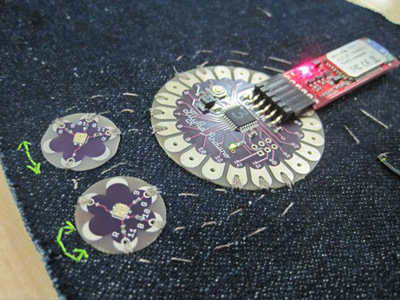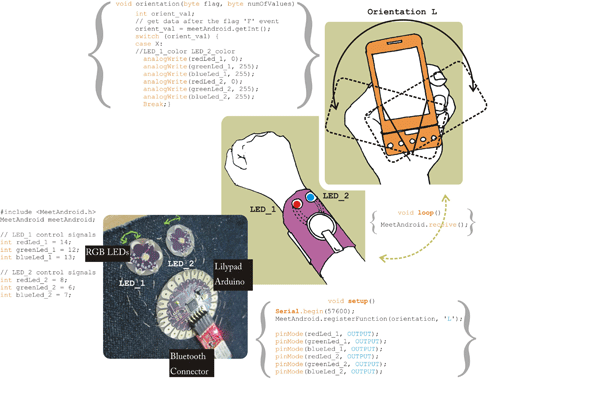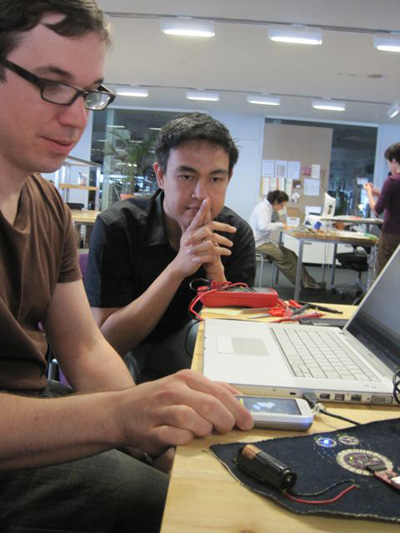| « Previous: Return to Assignment 6 description | Next: student work sample » |
New Textiles students: Dawn Wendell, Rizal Muslimin and anonymous student
Communicating with Mobile Technologies students: Thomas Lipoma and anonymous MIT student

The wristband component of the way-finder.
For our collaboration with the Communicating with Mobile Technologies class, we decided to make a wearable information display with two RGB LEDs. We envisioned these LEDs being used for guidance similar to the kids games of “simon says” or “hot and cold”, with the LEDs changing colors in response to the user’s orientation and distance from a target location. This is a more passive way of giving directions, with the user having to be actively involved in the discovery of the target place.
The Textiles team built a wrist-based device, connected with the LilyPad and two RGB LEDs. We also completed the bluetooth connection from the phone to the device and troubleshot the system using the output from the phone compass.

Design elements of the wrist-based way-finder.
Here is a video of the wristband responding to compass directions from the phone.
One LED changes color in response to the orientation of the phone, and the other LED changes from red to green when the phone has been held in the green (“correct”) position for longer than 3 seconds. This pause / response is intended to signify that you have traveled in the correct direction and have now arrived at the destination.

Potential applications include mobile navigation support and physiological monitoring. (Map image source © Google. All rights reserved. This content is excluded from our CreativeCommons license. For more information, see http://ocw.mit.edu/fairuse)
Lessons Learned
- We tried to make our own circuit, but were not able to get it working. Should have tested the circuit before sewing it to the wristband.
- The battery holder we were given gave us lots of trouble - the leads kept falling off so we spent a lot of time ripping them off the wristband and resoldering them, even though we tried to sew the leads in place for strain-relief.
- It was very hard to do anything in parallel because we had one device, one LilyPad, one phone, and two groups from the Mobile Technologies class who both needed to use the textile device.
- Scheduling undergrads and grads together is HARD. We were never able to actually meet up with our Mobile Technologies teammates.

Testing the system.
Contributions
Anonymous student: software, phone connection
Dawn: wristband, documentation
Rizal: circuit, soldering, documentation
Code
BDR Standalone (TXT)
BDR Integrated (TXT)
| « Previous: Return to Assignment 6 description | Next: student work sample » |








